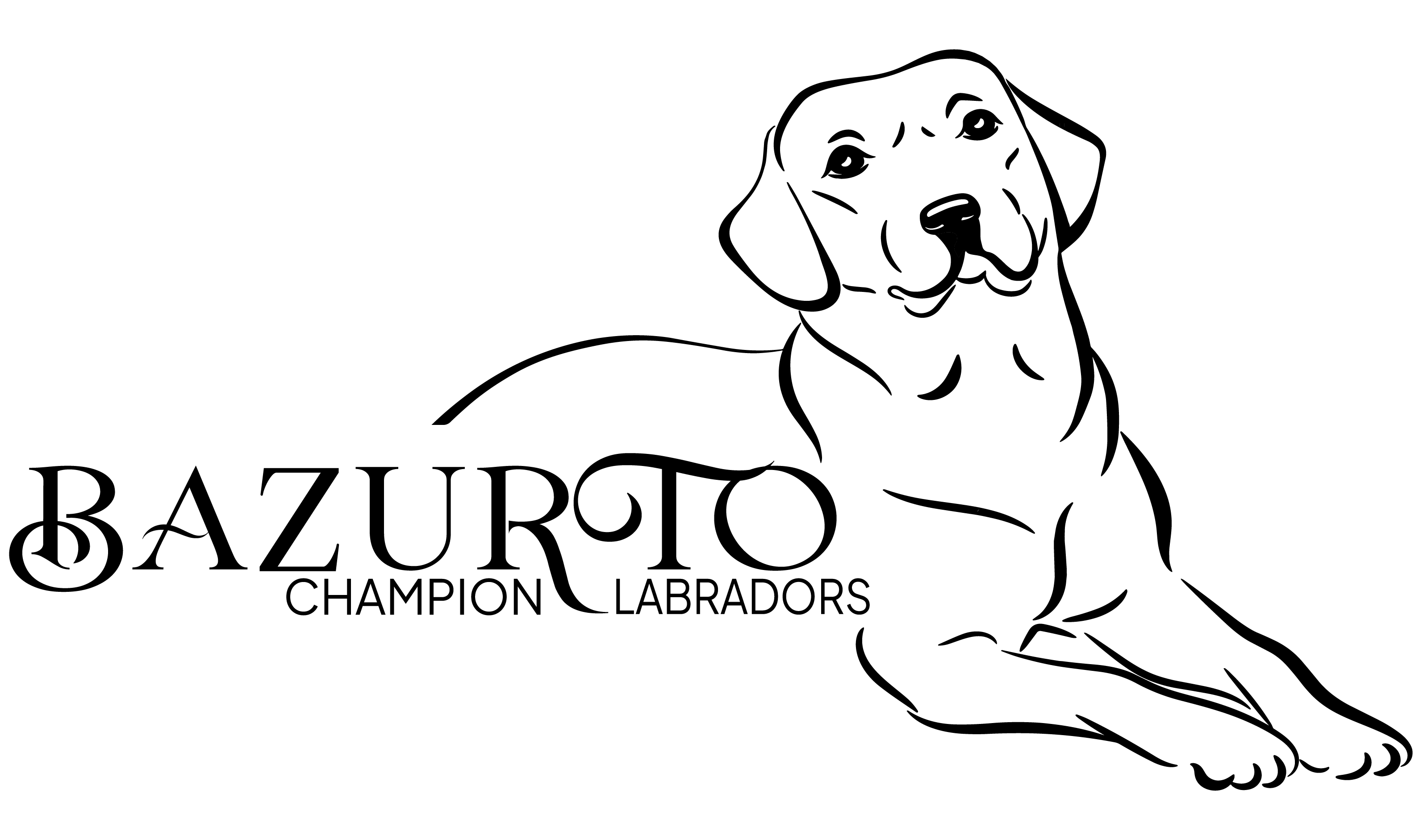Before Your Puppy Arrives
(Getting things Ready)
Your New Puppy is Home Now
(First Two Weeks)
YOUR TOP FOUR PRIORITIES
Preparing for Your Puppy
Welcoming a new puppy into your home is an exciting adventure! Here are some tips and items to get you started. If you have any questions, feel free to contact us by phone, email, or WhatsApp.
Crates
An adult Labrador needs a 42” length crate (500 size vari kennel). For a puppy, especially during potty training, a crate just big enough for their body size works best. Wire crates with partitions are perfect for creating a puppy-sized area that can grow with your puppy. Be cautious with tiny puppies (8-12 weeks) in wire crates as their little paws can get stuck. Use a smaller crate or place towels or blankets to block any gaps.
Potty Training Trays and Pellets
For our dog runs and puppy play yards, we use washing machine trays with pine pellets from Tractor Supply. Not recommended for rugs or carpets as the pellets turn to sawdust when wet, but perfect for an ex-pen area or in the kitchen or bathroom. We introduce puppies to potty pads around 3 weeks old, adding pellets and gradually removing the pads as they grow.
Toys
Choose toys that are appropriate for your dog’s age, size, and chewing habits. Avoid anything that can fit completely in their mouth or be swallowed. We recommend avoiding rawhide and rope toys. Our favorites include Benebone, Nylabone, KONG toys, Chuck-It balls, and treat-dispensing toys like the Buster Cube and Atomic Treat Ball. Always monitor your dog with toys.
Bedding
We don’t recommend beds filled with beans, pellets, stuffing, or foam for older puppies or young adults as they may chew and ingest the material. We use lounge beds like Kuranda beds for our dogs. In crates, we test with blankets or towels, removing them if the dog chews. Older, more mature dogs get crate pads or cushions.
Food
We feed Purina Pro Plan Chicken & Rice Puppy to our growing puppies, starting around 4 weeks of age. It’s a scientifically backed food that our dogs thrive on. Avoid grain-free foods and large breed puppy formulas. Follow your vet’s recommendations and do your research into dog foods. If you have questions, please contact us.
Bowls for Food and Water
We use stainless steel bowls and buckets. They are durable, easy to clean, and come in various sizes and shapes. We wash our dogs’ bowls after each meal. Avoid plastic bowls as they can break down and cause health issues. Ceramic bowls are fine if your dog won’t throw them around.
Treats
Good treats are crucial for training. We use soft, chewy treats that are easily broken into small pieces. Some favorites are Hip To Be Square treats from Lucy Pet, Kirkland treat sticks from Costco, and Pupperoni. For home snacks or KONGs, we use apple slices, baby carrots, green beans, meat pieces (no bones), raw or natural peanut butter, and eggs.
Grooming and Care
Labradors shed, especially during seasonal changes. Regular grooming reduces shedding and “doggy smell.” We recommend Earthbath, Lucy Pet shampoo, and Mane n’ Tail shampoo. Use a slicker brush and dematting rake like the Mars Coat King for grooming. Clean your dog’s ears and trim their nails regularly. Do not shave your Labrador; it’s important for their coat and skin health.
Collars and Tags
Start with an adjustable flat buckle collar for your puppy. Training collars like martingale or Herm Sprenger chain collars can be used as your pup grows. Avoid collars with dangling tags for safety.
Leads
We love Mendota slip leads for moving dogs around, traveling, and some training. They’re easy to clean and come in many colors and patterns.
Female’s Seasons
If you have a female pup, her first heat cycle may start around nine months. Watch for swelling or blood drops and keep her away from males for about twenty-one days. Doggy panties and liners can help with cleanliness.
Dog Parks and Beaches
Exercise is important, but be cautious at dog parks and off-leash areas. Ensure the environment and other dogs are safe. Always be aware and ready to leave if needed.
Socialization vs Desensitization
Socialization teaches puppies who their friends are. Desensitization helps puppies handle new, potentially scary situations. Both are crucial for a well-adjusted dog. Training and exposure to new experiences should be ongoing.
We Are Here for You!
If you ever have questions about training or anything else, please don’t hesitate to contact us. We’re here to help by phone, email, or WhatsApp.


